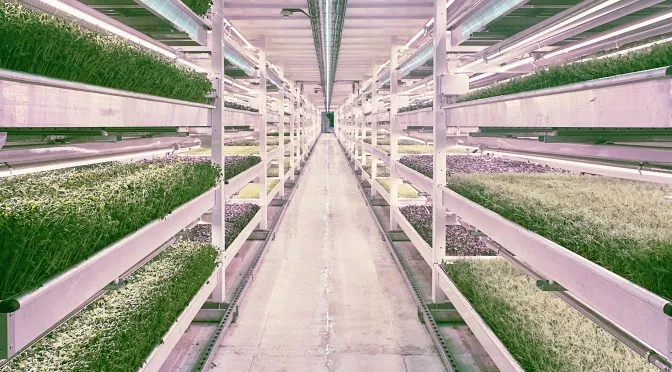Benefits of Vertical Farming

Vertical Farming is a relatively new farming system where food is produced in vertically stacked layers. Most vertical farms are hydroponic, where plants are grown in a bowl of water which contains nutrients, or aeroponics, where the plants’ roots are sprayed with a mist that includes water and nutrients.
Benefits of Vertical Farming:
1. Saves Space. Big cities such as New York or small, densely populated countries like Hong Kong can benefit significantly from this farming technique because it’s indoors and doesn’t require a lot of space (about 1 acre as opposed to 4-6 acres for traditional farms).
2. Growing Season Year-Round. Technology can be used to control every aspect of the plant’s environment. These vertical farms can adjust the temperature, humidity, and light to precisely what is needed for optimal growth. Also, since this is a controlled environment with no insects, there is no need for pesticides and other chemicals.
3. Weather Isn’t An Issue. Natural disasters like floods and hurricanes can wreak havoc on traditional farms. With vertical farms, the produce is protected from Mother Nature’s wrath. Also, vertical farms use up to 70% less water than conventional farms. These vertical farms are perfect for drought-prone areas.
4. Decreasing Carbon Footprint. Most of the produce in our local grocery store has to travel vast distances before it ends up on the shelves. With vertical farming, the farms can be closer to the grocery stores. This means less travel, longer shelf life, and fewer greenhouse gasses releasing in the atmosphere.

